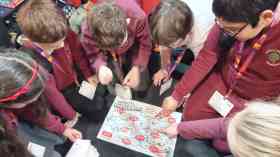In the heart of the UK's payment landscape stands allpay Limited, a pioneering force led by the visionary founder and entrepreneur, Tony Ki
Latest Supplier News
Borg & Overström is a UK manufacturer of premium drinking water solutions. For over 20 years Borg & Overström has developed sustainable, bottle-less, hygienic, drinking water dispensers with the aim to provide exceptional, safe, self-service drinking water into schools, universities, workplaces and communal spaces.

 Allergies can take so many forms that when symptoms occur, people could be unaware there could be an allergic link. When it comes to food allergy, anaphylaxis – the most immediate and severe of all allergic disease – is well understood, however, the more chronic types of allergy related conditions are not. It is often more difficult to ensure that the child is in an environment where their symptoms can be both minimised and well managed.
Allergies can take so many forms that when symptoms occur, people could be unaware there could be an allergic link. When it comes to food allergy, anaphylaxis – the most immediate and severe of all allergic disease – is well understood, however, the more chronic types of allergy related conditions are not. It is often more difficult to ensure that the child is in an environment where their symptoms can be both minimised and well managed.








